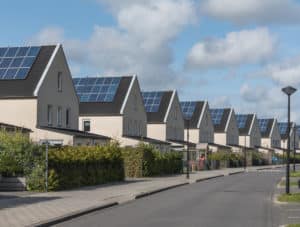Proposed Part Z building regulations could provide mandatory assessments and reporting of whole life carbon. What does this mean for self builders?
Embodied carbon is a hot topic in the world of sustainable construction. With the net zero drive on the horizon, making a conscious and deliberate effort to cut your carbon emissions from the entire building life cycle has fast become a priority.
And this isn’t a quick fix. Research from the UK Green Building Council has shown that embodied carbon emissions from the construction, maintenance and demolition of buildings, creates 40-50 million tonnes of CO2 every single year. That’s an enormous amount; in fact, it’s more than shipping and aviation combined.
Up until now, this has been strongly advised but it hasn’t been a part of building regulations. However, this could be set to change with new proposals for building regulations document Part Z.
What is the New Building Regulations document Part Z?
So far, the new building regulations document Part Z is a concept. It’s an industry proposed amendment that would ensure mandatory assessments and reporting of whole life carbon, thus reducing the amount of embodied carbon across the construction industry.
Authors of the proposal stated:
‘We have written Part Z and its accompanying Proposed Document Z as a proof of concept of the regulation that’s needed in the UK. If enacted, Part Z would ensure that embodied carbon is assessed on all projects, as part of a comprehensive whole life carbon assessment.
It would also ensure that the embodied carbon emissions are then capped on all major construction projects – initially through limits on upfront embodied carbon, but over time expanding to cover all aspects of embodied carbon.’
If Part Z was to come into effect, construction firms would be required to assess and report on whole life carbon on all non-residential projects over 1,000m2 from 2023 and residential projects from 2025.
Of course, until parameters are set in stone it’s to say how this will impact self builders. However, there are so many ways to reduce your level of embodied carbon and the limitations set in the proposal seem very achievable.
If this is somewhat of a new concept to you, we recommend that you read our (free!) report, 10 ways to reduce your building’s embodied carbon footprint.
Why is Part Z necessary?
To fully appreciate why Part Z is needed, it’s important to understand the full extent of embodied carbon and its impact on the environment.
Embodied carbon is the carbon footprint of a given material. Essentially, it looks at the level of greenhouse gases being released throughout the supply chain of the material, and how this is contributing to overall emissions from the construction sector.
The measurement for embodied carbon runs throughout the entire life-cycle of the material and the building it is moved into; it’s a “cradle” to “grave” system.
But, from the word go, the ramifications of embodied carbon cannot be reversed. Once the embodied energy has been released, the time for improvement has run a mile.
It is therefore crucial that we explore ways to minimise embodied carbon and prioritise the assessments needed to judge it.
RELATED: WHAT IS EMBODIED CARBON AND HOW SHOULD I APPROACH IT?
Can Buildpass help me reduce my embodied carbon?
Absolutely! We offer a range of services that can help to reduce your carbon emissions and minimise your levels of embodied carbon. From Energy Performance Certificates to Passivhaus, take a look at our services to see which package is perfect for you and your build. If you are still unsure, schedule a call with a member of the team! We would be happy to help talk you through your needs and find the suitable service for you.
WE THINK YOU MIGHT LIKE:
- 5 TIPS FOR ENVIRONMENTALLY RESPONSIBLE CONSTRUCTION
- NEW HOMES, LESS CARBON?
- IS IT ENOUGH TO SIMPLY REDUCE OUR ENVIRONMENTAL IMPACT?




















